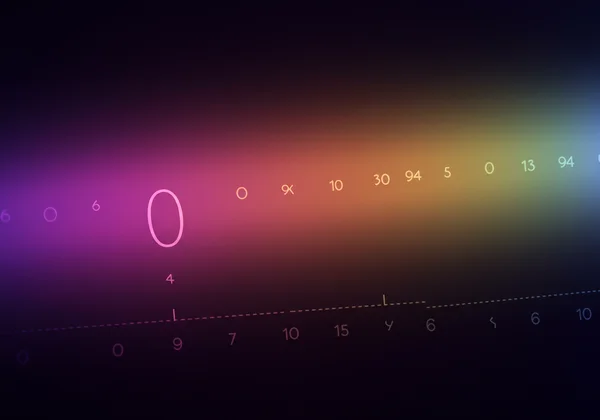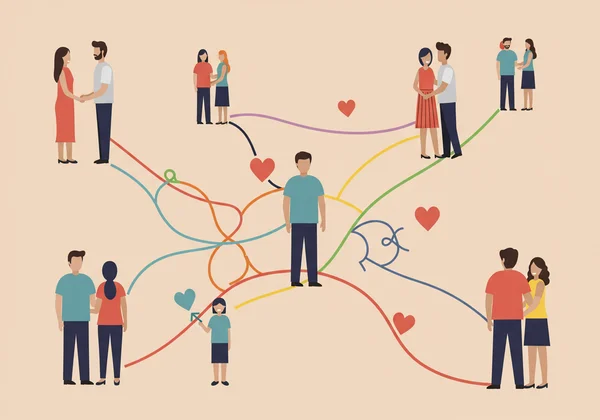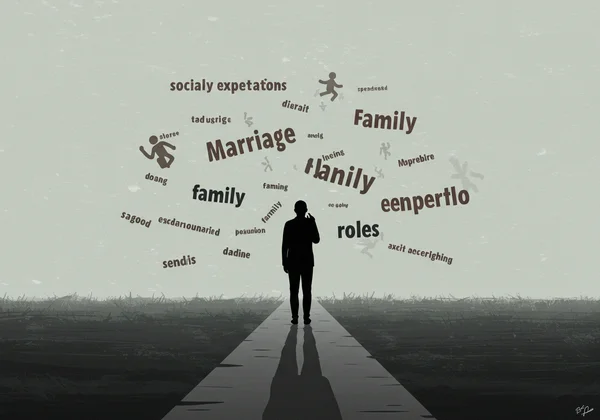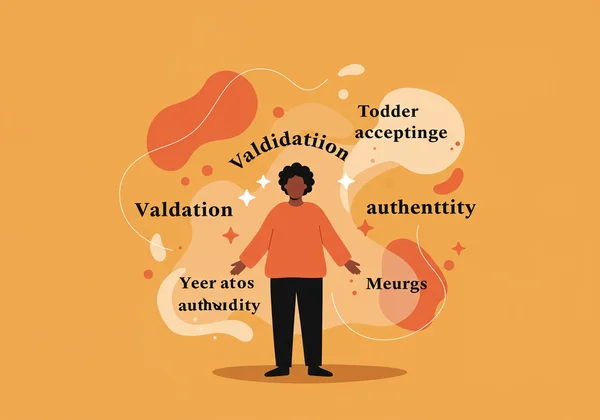金赛量表 0 分的含义:理解完全异性恋身份
欢迎深入探讨金赛量表中的 0 分,这个分数在性取向谱系中常被视为最简单的,但其本身也充满了独特的细微之处。虽然著名的七点量表表明性取向存在于一个连续统一体上,但理解每个点对于全面理解至关重要。 0 分在这个量表上具体意味着什么? 本文旨在阐释完全异性恋身份的定义、经历和常见误区,为认同此身份的人以及寻求了解更多的盟友提供更清晰的理解。
自我发现的旅程对每个人而言都是私密且独一无二的。无论您是在确认自己的感受,还是在加深您的理解,您都身处一个安全且支持性的空间。要开始您的个人旅程,您可以随时在我们的主页上 探索这个谱系。
0 分的真正含义
量表上的 0 分被定义为“完全异性恋”。这意味着个体持续地将其性感受、行为和吸引力完全指向异性。然而,就像这个细致入微的框架上的任何一点一样,其含义超越了简单的定义。它关乎情感、浪漫和性吸引力的一贯模式。
理解这个分数是认识阿尔弗雷德·金赛的工作首次揭示的人类性取向全貌的第一步。它为理解整个性取向谱系提供了基础。对于那些探索自己身份的人来说,了解 0 分的含义,与了解 3 分或 6 分的含义同样重要。

金赛对完全异性恋的原始定义
在阿尔弗雷德·金赛及其同事于 20 世纪中叶进行的开创性研究中,该量表的开发旨在挑战僵化、二元的性取向观念,这一概念由 金赛研究所 进行了广泛研究。 0 分的 原始定义 基于个体自我报告的性行为历史和心理性反应。得分 0 的人报告没有同性恋经历或吸引,他们的性生活仅指向异性。
这在当时是一个激进的概念,因为它将异性恋置于一个谱系上,而不是将其视为唯一的“正常”状态。它承认,即使是最常见的性取向也只是众多可能性中的一点,从而肯定其为自然连续体的一部分。
超越二元:完全异性恋身份的细微之处
今天,我们对性取向的理解已经发展。虽然金赛 0 分的定义依然存在,但我们认识到此身份中丰富的 细微之处。认同为完全异性恋并不意味着每个个体都有相同的经历。浪漫吸引与性吸引、审美欣赏以及深厚的柏拉图式关系等因素都可以塑造一个人的人际关系。
金赛 0 分身份并非一个整体;相反,它只是描述了一个人的性吸引和浪漫吸引力的主要方向。这种视角帮助我们超越二元观点,拥抱所有人性体验中固有的复杂性。如果您好奇自己可能属于哪个范畴,您可以随时 参加我们的免费测试 以获得一个反思的起点。

以金赛 0 身份生活:常见经历与视角
对于许多认同为 完全异性恋 的个体来说,他们的性取向感觉是他们自身一个自然且一以贯之的组成部分。本节探讨与此身份相关的一些常见经历和视角,同时认识到每个人的旅程都是独一无二的。
重要的是要记住,这些是一般性观察,而非僵化的规则。目标是提供洞察和验证,无论您是否在此找到共鸣,还是正在了解他人的经历。这种探索是我们平台鼓励的自我发现过程的关键部分。
吸引模式与行为一致性
金赛 0 身份的一个核心方面是 吸引模式 的一致性。这通常涉及一种终生将浪漫和性吸引力专门指向异性的模式。这些吸引力体现在思想、幻想和行为中,随着时间的推移形成一种连贯的自我意识。
这种 行为一致性 为许多人提供了强烈的身份认同感。它是他们理解自己是谁以及如何与他人建立浪漫联系的稳定锚点。这种一致性并不意味着缺乏好奇心或对其他性取向的无知;它仅仅描述了个体的个人现实。
浪漫和无性恋谱系的作用
重要的是要认识到,金赛框架主要衡量性吸引力的方向。因此,0 分代表一个人的异性恋,但不一定代表他们全部的浪漫或性体验。例如,一个人可以是异性恋(被异性吸引),但也可以是无浪漫倾向者(几乎没有浪漫吸引)。
同样,异性恋与无性恋谱系并存。一个人可能只被异性吸引,但这种吸引力体验不频繁或强度较低。从像无性恋可见性和教育网络(AVEN)这样的资源中了解无性恋可以提供一个更全面的认识,说明身份的不同方面如何交织。
应对社会期望和假设
虽然异性恋在许多文化中常被认为是常态,但这伴随着一套 社会期望。这种被称为异性恋常态的现象,可能会造成一种假设,即一个人的生活道路——关于婚姻、家庭和人际关系——是预先确定的。这些期望有时会让人感到受限,即使身份本身感觉真实。
此外,还可能存在符合与异性恋相关的特定性别角色或表达的压力。理解这些外部压力至关重要。身份之旅是关于拥抱真实的自己,独立于社会 假设。我们的互动式 金赛量表测试 旨在成为一个用于个人洞察的私人工具,不受外界评判。

揭穿关于完全异性恋的迷思
正如任何其他性取向一样,围绕 完全异性恋 身份存在许多迷思和误解。挑战这些迷思对于促进对整个性取向谱系更具包容性和准确的理解至关重要。
通过直接解决这些误解,我们可以验证每一种身份,并确保没有人觉得自己的经历被忽视或误解。这种教育方法是我们平台使命的核心。
解决关于“默认”身份的误解
最普遍的 误解 之一是,异性恋是“默认”或“正常”状态,而所有其他性取向都是偏离。这个评分系统本身就是为了打破这种观念而创建的。它将异性恋定位为广阔谱系上的一个有效点,而不是衡量其他人的标准。
将异性恋视为默认可能会无意中贬低其他身份并造成社会等级。一个真正包容的视角认识到,谱系上的每一点,从 0 到 6,都是同样自然和有效的。每一次自我发现的旅程都是合法的,您可以随时 开始您的探索。
您可以是金赛 0 分,同时也是一个坚定的盟友吗?
当然。一个常见的误解是,只有 LGBTQ+ 群体的成员才能成为热情而有效的盟友。您的性取向并不能定义您的同情心、尊重或倡导能力。成为盟友关乎行动、教育,以及利用您的位置支持和赋能他人。
理解您作为金赛 0 分的自身身份实际上可以成为盟友关系的一个强大工具。通过反思您自己的旅程,您可以对每个人都经历的个人且往往复杂的自我发现过程产生更深刻的理解,从而对他人抱有更富有同情心的视角。
肯定您的身份:作为金赛 0 分寻找认同
在一个日益且理所当然地专注于庆祝 LGBTQ+ 身份的世界里,一些完全异性恋者可能会疑惑他们在对话中的位置。 肯定您的身份 作为金赛 0 分与肯定任何其他身份同样重要。它关乎毫不歉意地认识和尊重您真实的感受和经历。
找到 认同 意味着理解您的身份是人类性取向美丽多样性中有效且不可或缺的一部分。这并非意味着“无聊”或“不开明”;它关乎忠于自我。探索这个框架的目标是普遍的:实现对自我和他人的更深入、更富有同情心的理解。

拥抱您的身份:一段持续的旅程
理解您在谱系中的位置——无论是 0 分、6 分,还是介于两者之间的任何一点——是一段自我意识的旅程,而不是最终目的地。金赛 0 分代表完全异性恋身份,这是一种有效、细致入微且构成人类体验不可或缺一部分的经历。这是一种值得理解、肯定和尊重的身份。
自信地拥抱您的身份,并以开放的心态继续学习。对自我的探索是持续的,像这个评分系统这样的工具旨在提供洞察,而非标签。准备好看看您在谱系中处于何处了吗?今天就在我们的平台上安全私密地 发现您的结果。
关于 0 分的常见问题
评分系统中的 0 分具体意味着什么?
量表上的 0 分表示个体是 完全异性恋。这意味着他们的浪漫、情感和性吸引力始终指向异性成员,并且他们报告没有显著的同性吸引或经历。
一个人的金赛 0 分身份会随着时间改变吗?
是的,这是可能的。对某些人来说,性取向可能是流动的。虽然许多金赛 0 分的人一生都保持这种性取向,但其他人可能会发现他们的吸引力会随着时间而改变。该量表是对一个人感受和经历的快照,而不是一个永久的标签。
将金赛 0 分识别为“正常”或“默认”性取向吗?
不是。这个框架的核心原则是,没有“正常”或“默认”的性取向。0 分是人类性取向谱系中众多有效点之一。从 0 到 6 的每一点都代表一种自然的变异。将其视为多样化连续体的一部分,有助于您更好地 理解您的分数。
0 分与其他性身份有何关系?
0 分(完全异性恋)是七点谱系的一端。它与 6 分(纯同性恋)以及介于两者之间的不同程度的双性恋(1-5 分)形成对比。它为理解性取向的整个框架提供了一个重要的参考点,将其视为一个连续体而非严格的二元分类。